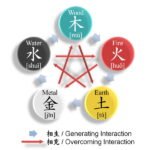
Samsung Electronics Co. has recently notified major clients of an increase in DRAM prices by 15-30% for the fourth quarter, alongside a 5-10% hike in NAND flash prices, according to semiconductor industry sources and foreign media reports on Tuesday.
Samsung has joined Micron Corp. and Sandisk Corp., in marking up chip prices as the rise of generative AI is driving demand for high-capacity, high-speed chips used in data centers and AI inference systems.
Semiconductor industry watchers said Samsung and SK Hynix Inc. are seeing a flood of orders for high-performance chips, including high-bandwidth memory (HBM), graphics double data rate 7 (GDDR7) and low-power double data rate 5 X (LPDDR5).
LPDDR5, the fifth generation in its series, is expected to witness rising demand following the launch of Nvidia Corp.’s next-generation AI GPU, Rubin, which is designed for large-scale AI applications.

NAND FLASH CHIPS
NAND flash, the core component of solid-state drives (SSDs), is experiencing growing demand as cloud service providers are shifting from traditional hard disk drives (HDDs) to SSDs, especially, enterprise SSDs (eSSDs).
eSSDs offer significantly faster read and write speeds than conventional SSDs, making them ideal for next-generation AI infrastructure.
“With HDD supply running short and SSDs offering better performance for the price, demand for SSD-based storage upgrades is accelerating,” said an industry official.
In a recent note, Morgan Stanley said recent orders for eSSDs with delivery scheduled for next year already match the full-year volume of 2025.

ATTRACTIVE FROM NEUTRAL
Morgan Stanley forecast that surging demand for enterprise SSDs (eSSDs) will lead to a NAND flash supply shortfall of up to 8% in 2026 in a recent note titled “Memory Supercycle – Rising AI tide lifting all boats.”
Samsung Electronics and SK Hynix together hold over 60% of the global market for NAND flash used for eSSDs, with market shares of 34.6% and 26.7%, respectively.
Kioxia, the world’s third-largest NAND producer, plans to launch an SSD in 2027 that will be 100 times faster than current models, developed in collaboration with Nvidia.
In June, Kioxia forecasts that by 2029, almost half of global NAND demand will come from the AI sector.

WARM WINTER
Morgan Stanley said the average DRAM prices for the fourth quarter rose 9%, compared to current levels, driven by demand for chips used for cloud servers.
It upgraded its rating on South Korean chipmakers to attractive from in-line. It also raised its target price for Samsung Electronics by 12% to 96,000 won, driving its share price 4.77% higher to close at 83,500 won on Monday.
Morgan Stanley lifted its rating on SK Hynix to overweight from maintain with a new target price of 410,000 won. It edged down 0.57% to end at 351,000 won on Monday.
The bullish view marked a reversal from its earlier cautious stance in its March report titled “The iceberg looms,” where it warned that DRAM prices could face downward corrections through the end of this year.
UBS echoed Morgan Stanley’s upbeat outlook.
It recently forecast that NAND flash prices will rise for three consecutive quarters: up 3% in the third quarter, 5% in the fourth quarter and another 3% in the first quarter of 2026.

HIGH-BANDWIDTH NAND FLASH (HBF)
A next-generation NAND flash, or high-bandwidth NAND flash (HBF), is also expected to lead NAND demand over the medium to long term.
Last month, SK Hynix entered into a partnership with Sandisk to collaborate on HBF development. SanDisk plans to ship samples of its first-generation HBF featuring 16-layer NAND in 2026.
Samsung and SK Hynix command 44% of the global memory chip market, with Samsung making up 32.9% in the second quarter of this year, according to TrendForce.
Kioxia Holdings Corp., Micron and Sandisk Corp. follow 13.5%, 13.3% and 12%, respectively.
By Ui-Myung Park
uimyung@hankyung.com
Yeonhee Kim edited this article.















